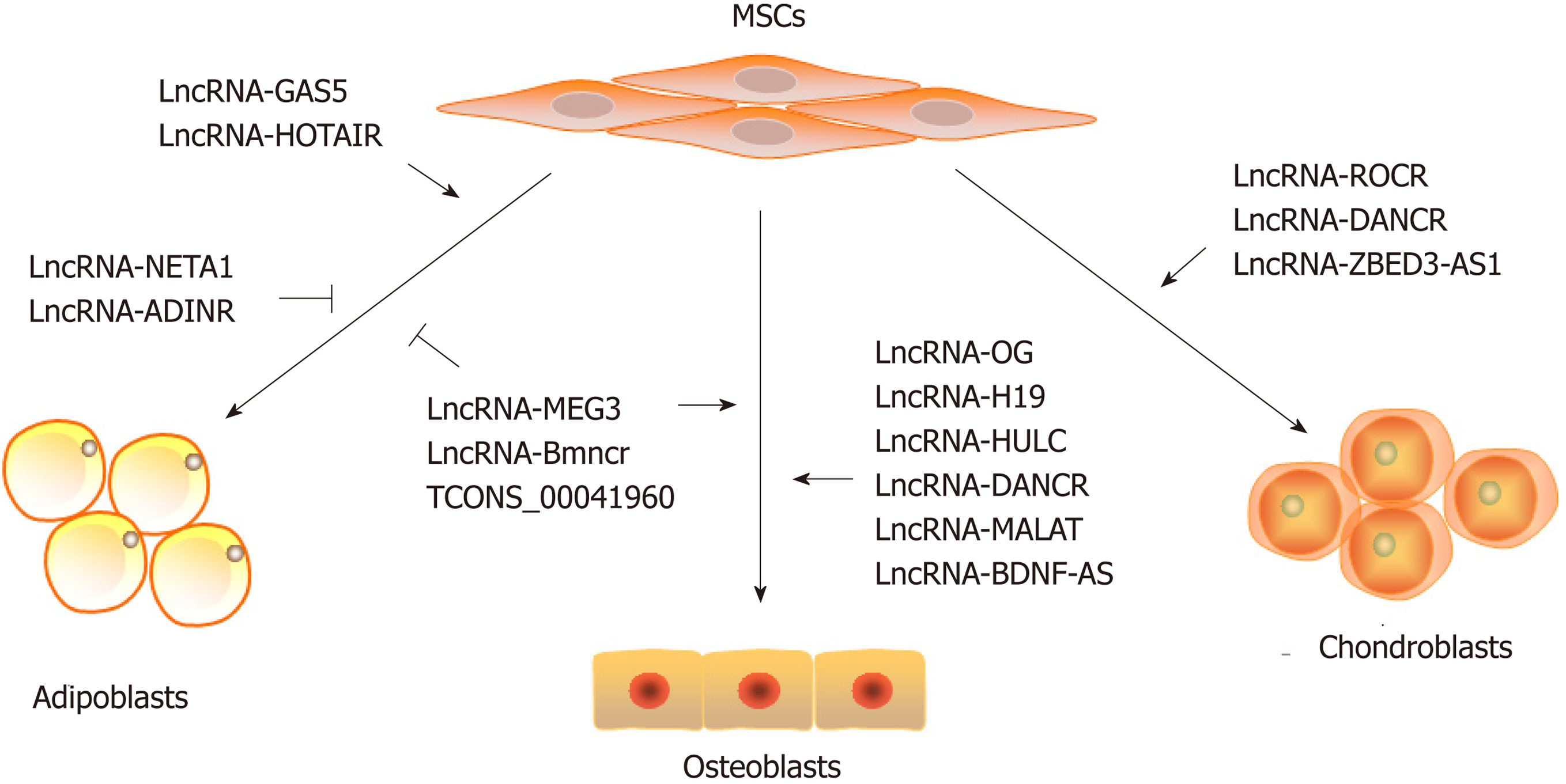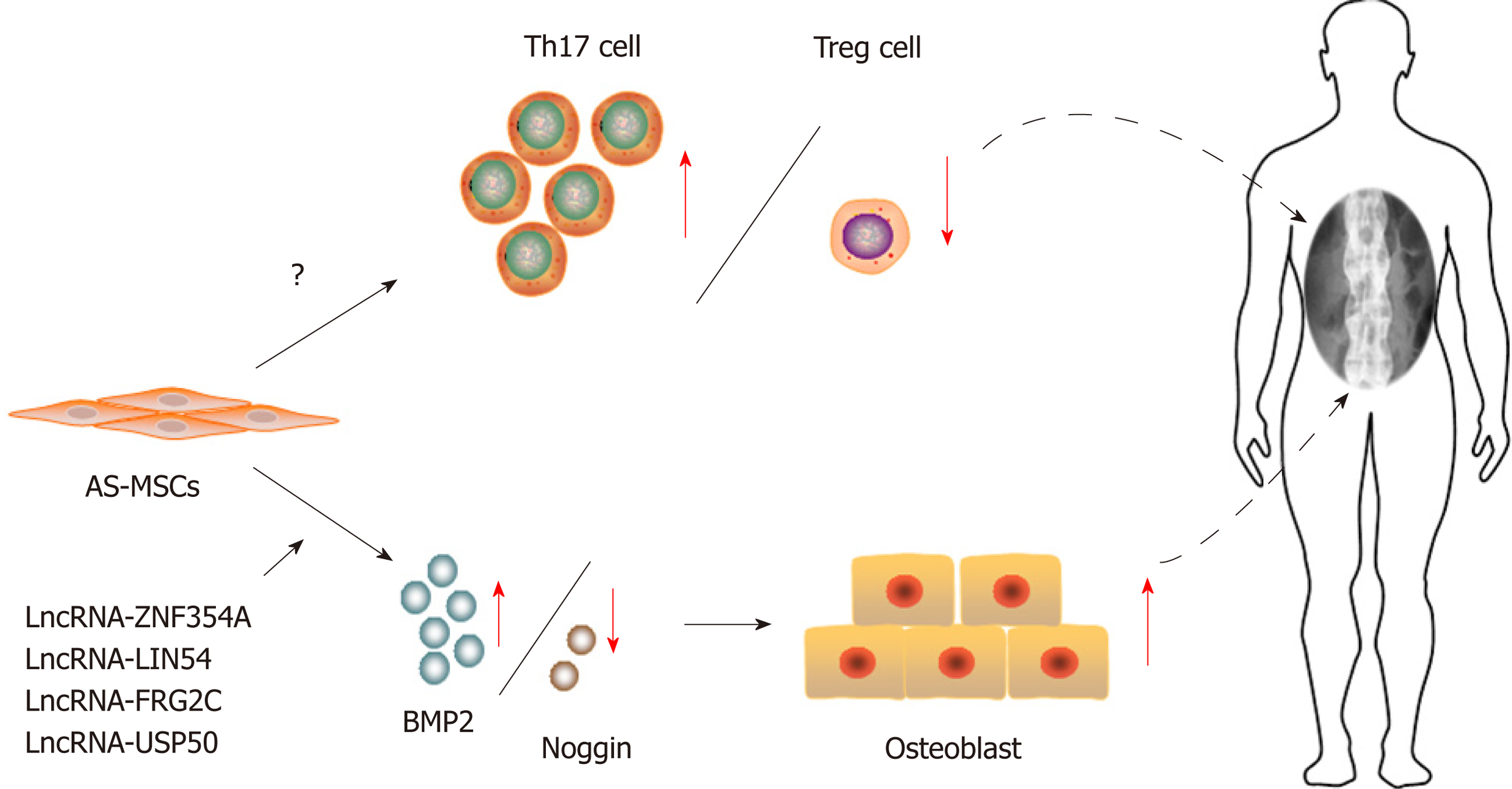Copyright
©The Author(s) 2019.
World J Stem Cells. Mar 26, 2019; 11(3): 167-179
Published online Mar 26, 2019. doi: 10.4252/wjsc.v11.i3.167
Published online Mar 26, 2019. doi: 10.4252/wjsc.v11.i3.167
Figure 1 Long non-coding RNA in the tri-lineage differentiation of mesenchymal stem cells.
Mesenchymal stem cells possess the capacity for osteogenic, chondrogenic and adipogenic differentiation, and many long non-coding RNAs play an important role in this process. MSCs: Mesenchymal stem cells; LncRNA: Long non-coding RNA; HOTAIR: HOX transcript antisense RNA; GAS5: Growth arrest specific 5; MEG3: Maternally expressed 3; BMNCR: Bone marrow stem cell–related LncRNA; GAS5: Growth arrest specific 5; ROCR: Regulator of chondrogenesis RNA; DANCR: Differentiation antagonizing non-protein coding RNA; ZBED3-AS1: Zinc finger BED-type containing 3 antisense RNA 1; HULC: LncRNA-highly upregulated in liver cancer; MALAT: Metastasis-associated lung adenocarcinoma transcript; BDNF-AS: Brain-derived neurotrophic factor antisense.
Figure 2 Mesenchymal stem cells in ankylosing spondylitis.
Mesenchymal stem cells (MSCs) from ankylosing spondylitis (AS) patients (AS-MSCs) have lower immunoregulation ability, resulting in an imbalance between Th17 cells and Treg cells. In addition, AS-MSCs secreted more BMP2 but less Noggin, leading to their enhanced osteogenic differentiation ability. LncRNA-ZNF354A, Lin54, FRG2C and USP50 were involved in this dysfunction. The disorders of AS-MSCs resulted in chronic inflammation and pathological osteogenesis in the axial skeleton of AS patients. MSCs: Mesenchymal stem cells; AS: Ankylosing spondylitis; LncRNA: Long non-coding RNA; BMP: Bone morphogenetic protein.
- Citation: Xie ZY, Wang P, Wu YF, Shen HY. Long non-coding RNA: The functional regulator of mesenchymal stem cells. World J Stem Cells 2019; 11(3): 167-179
- URL: https://www.wjgnet.com/1948-0210/full/v11/i3/167.htm
- DOI: https://dx.doi.org/10.4252/wjsc.v11.i3.167










